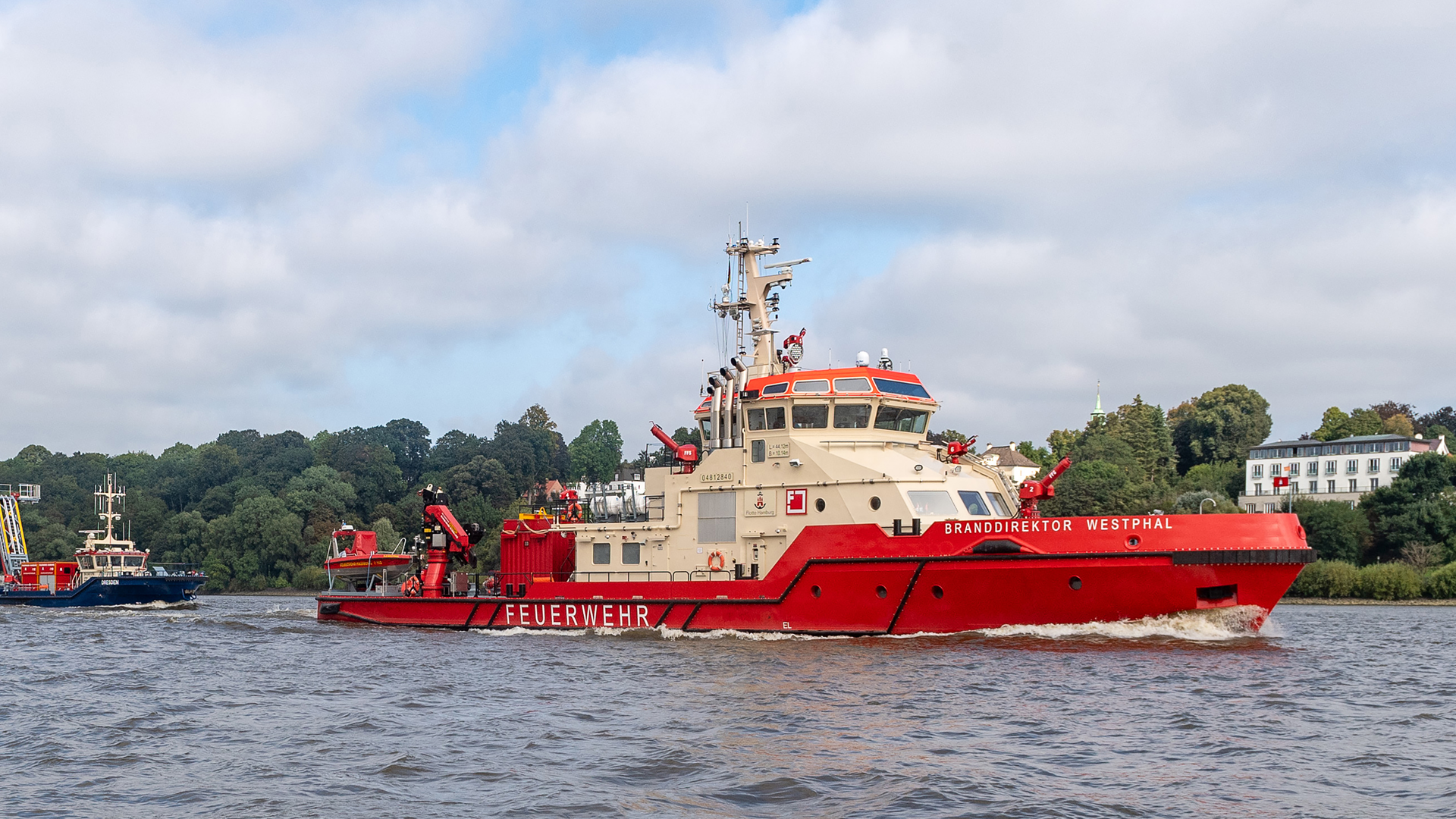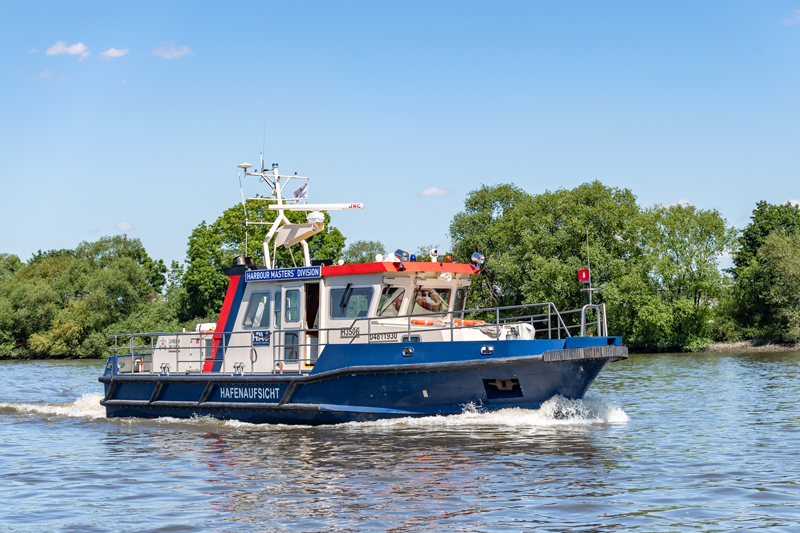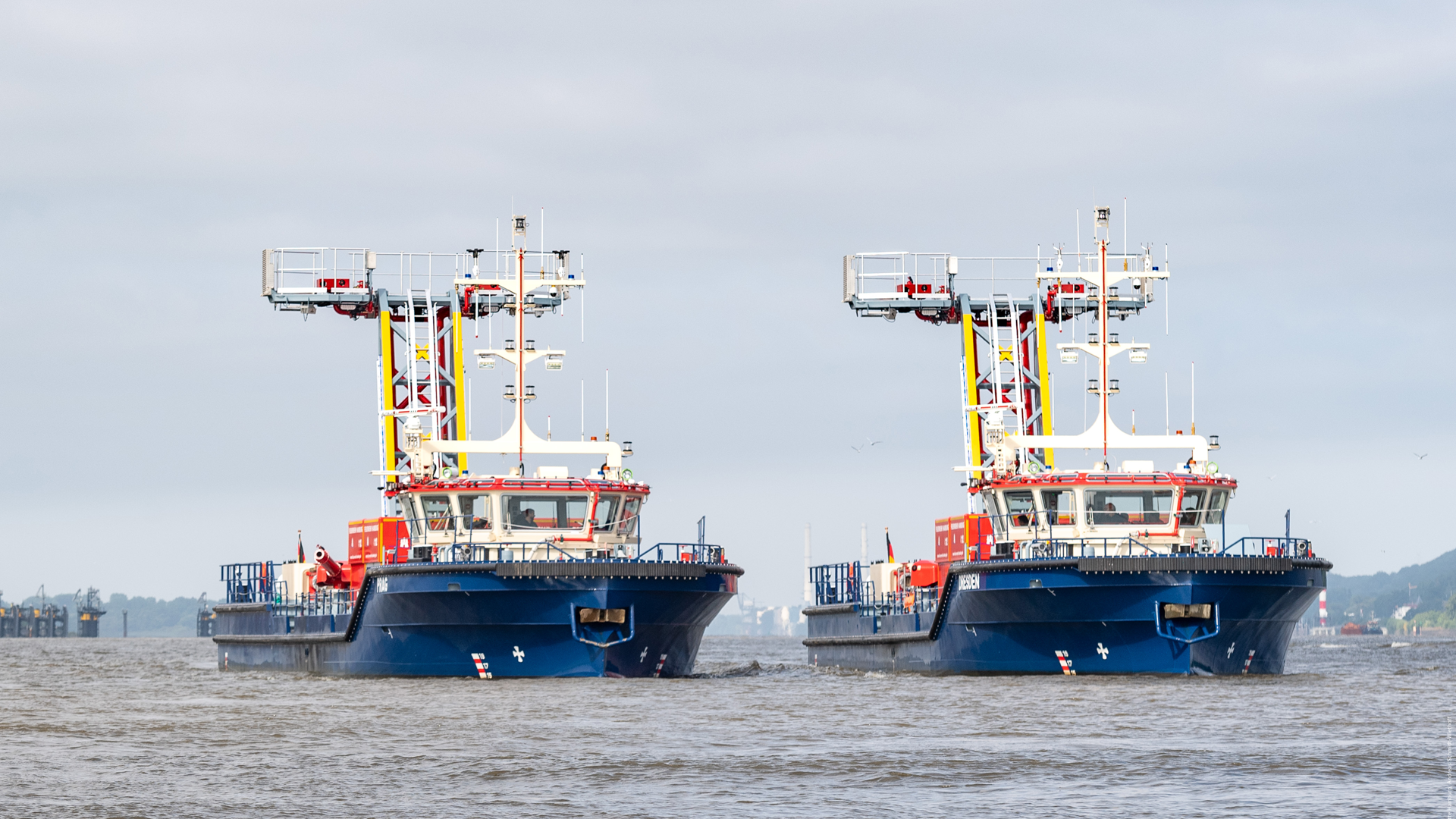MSC Germany focuses on Sustainable Supply Chains
Decarbonisation is one of the shipping industry’s greatest challenges.

Under the motto ‘Hamburg’s Green Fleet’, since 2017 Hamburg has combined all municipal craft under a single fleet management and has moreover set itself the target of becoming the top player for alternative, sustainable ship operation.
Hamburg’s municipal fleet – or Grüne Flotte Hamburg – comprises about 45 craft. Thanks to this consolidated management, not only can maintenance, repair and acquisition be standardized, but any chartering can be cost-efficient. Newbuildings, rebuildings and maintenance are self-financing. Given an environmental strategy aiming for clean, green shipping, one especially relevant element of fleet management here is fleet modernization.
Accounting for less than one percent of atmospheric pollutant emissions in Hamburg, the fleet’s direct impact may be small, yet it can function significantly as a pioneer of change.
As one of Hamburg Port Authority’s subsidiaries with 150 staff, the fleet not only offers the essential nautical experience, but is an independent candidate for innovative investments with no public subsidy involved.
Combining all municipal craft as one entity makes a uniform environmental strategy feasible for the first time. This embraces five fields of action, or five pillars forming the basis for fleet management that will make shipping here modern and fit for the future,
namely: Low-emission fuels, exhaust after-treatment systems for new vessels, retrofit solutions, innovative propulsion technologies and energy-efficient ship operation.
Converting and modernizing existing craft sustainably can already reduce emissions of nitrogen particles and nitrogen oxide by over 90 percent. Fitting systems for subsequent exhaust gas treatment or even installing hybrid propulsion can form a substantial part of a green environment strategy.
Costing about 150,000 euros per ship, these measures are not inexpensive. Depending on ship type, however, engine-room size is a more serious challenge. Re-equipment measures often prove irrelevant, however, with the engine-room simply not offering sufficient space for new motors or exhaust treatment filters.
For wholesale transition to a green fleet, in the long term new acquisitions will prove essential too. The fleet currently envisages having one or two of these per year. In 2021, for example, the two firefighting craft ‘Dresden’ and ‘Prag’, with hybrid plug-in propulsion, were taken into service. The third hybrid boat is the ‘Chicago’, a silt plough replacing the old leveller ‘Otto Stockhausen’. With her hybrid-battery propulsion, the ‘Chicago’ is not only more efficient but also more low-emission. All newbuildings are basically also fitted with the latest technology for treating exhaust gases. This functions through a combination of fine particle filters and nitrogen acid catalytic converters. So even if electric operation is entirely or partly impossible, pollutant emission can be substantially reduced.
This technology is also being deployed for the river police: Three new police launches and a pilot transfer boat are using the exhaust gas treatment filter.
Apart from the added value that it generates for the City of Hamburg and its port, the fleet always sees itself as a general testbed and practical test laboratory for new technologies and developments. The range extends from developing new prototypes to involvement in developing new climate-neutral fuels as well as testing these in practice. Way beyond fields of application within the Port of Hamburg, the Grüne Flotte Hamburg’s environment strategy is also of importance for a more sustainable and low-emission future for shipping.
Transfer to more low-emission fuels has already significantly reduced the fleet’s exhaust emissions. Even for those craft for which conversion to – part – electric propulsion is not feasible, use of a GTL – Gas-to-Liquid – process and HVO – Hydrotreated Vegetable Oil can already lead to a relevant reduction in PM emissions and others containing nitrogen oxide. This makes these fuels considerably more sustainable than use of diesel propulsion.
Creation of the fleet goes back to a Senate resolution in April 2016. The Senate decided to amalgamate the hitherto separate HPA, fire brigade, river police and LSBG – the state road, bridge and waterway administration – fleets under a single municipal fleet management – headed by HPA. After a test stage, the new, independent fleet management started operating on 1 July 2017. To facilitate as free and entrepreneurial trading as possible, and to ensure absolute transparency, at the same time fleet management was given a German-style corporate identity as an HPA subsidiary.
Hamburg’s municipal fleet currently comprises around 50 vessels. The majority of these are inland waterway craft with widely differing functions – such as firefighting and police vessels via survey craft to pilot transfer boats, transport craft and icebreakers. In addition, the fleet operates dredging equipment, a barge suction station and 40 barges. The team numbers about 150 employees. The highest proportion of these are crew members, or ship helmsmen/women and shipboard mechanics. To keep the Port of Hamburg running, these staff are on the job 24/7 for 365 days a year. A small, efficient team looks after movements, maintenance management, newbuilding projects and administration.
Source: https://www.hamburg-port-authority.de/de/tochtergesellschaften/ flotte-hamburg/unser-unternehmen


The sister vessels ‘Dresden’ and ‘Prag’ are more powerful than their predecessors, and the first two craft in Grüne Flotte Hamburg’s new series featuring the names of Hamburg’s twin cities. These are also the first two vessels in the Port of Hamburg with plug-in hybrid propulsion enabling them to run completely emission-free for up to two hours. As multifunctional extinguisher boats, they can be deployed, not only on firefighting and rescue duties, but also as bridge survey ships for HPA – Hamburg Port Authority) or LSBG – the state roads, bridges and waterway administration.
Length: 35.30 metres
Breadth: 7.80 metres
Draft: 1.50 metres
Water jets: Range of up to 70 metres –
height – and 150 metres – length – per hour,
requiring up to 2,500 cubic metres for firefighting